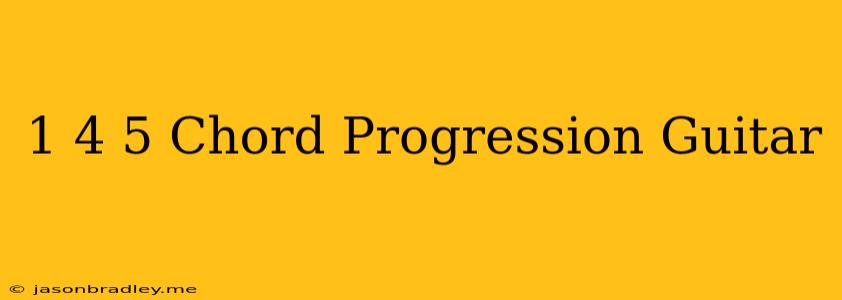The 1 4 5 Chord Progression: A Guitarist's Best Friend
The 1 4 5 chord progression is a cornerstone of music theory and a staple in countless songs across various genres. Its simplicity and versatility make it a must-know for any guitarist, regardless of their skill level.
Understanding the Basics
The 1 4 5 progression refers to playing three chords built on the root, subdominant, and dominant notes of a major scale. For example, in the key of C major, the progression would be:
- C Major (I): C - E - G
- F Major (IV): F - A - C
- G Major (V): G - B - D
This progression creates a strong sense of resolution as the dominant chord (V) leads naturally back to the tonic (I) chord. The subdominant chord (IV) provides a sense of movement and adds harmonic interest.
Playing the 1 4 5 on Guitar
Here's a simple way to play the 1 4 5 progression on guitar:
- Choose your key: Let's stick with C major for now.
- Find the root positions:
- C major (I): Use the open C major chord shape (C-G-E).
- F major (IV): Use the F major chord shape (F-C-A).
- G major (V): Use the G major chord shape (G-D-B).
- Practice transitioning: Smoothly move your fingers between these chord shapes.
Tip: Experiment with different strumming patterns to create variations.
Why is the 1 4 5 so Popular?
- Universality: This progression works in almost any musical style, from rock and pop to blues and jazz.
- Easy to remember: The simple structure makes it easy to learn and play.
- Strong resolution: The dominant chord creates a strong sense of completion, leading back to the tonic.
- Versatile: It can be played in various tempos and rhythms, allowing for diverse musical expression.
Beyond the Basics
While the basic 1 4 5 progression is great, there are endless ways to expand on it.
- Inversions: Play chords in different inversions to add harmonic depth.
- Substitutions: Use substitute chords like the minor vi chord for a more bluesy feel.
- Seventh chords: Add seventh chords to create more complexity.
- Rhythm variations: Experiment with different strumming patterns and rhythmic variations.
Mastering the 1 4 5
The 1 4 5 progression is a powerful tool that can be used in countless ways. By practicing and experimenting, you can unlock its full potential and add a new dimension to your guitar playing.
